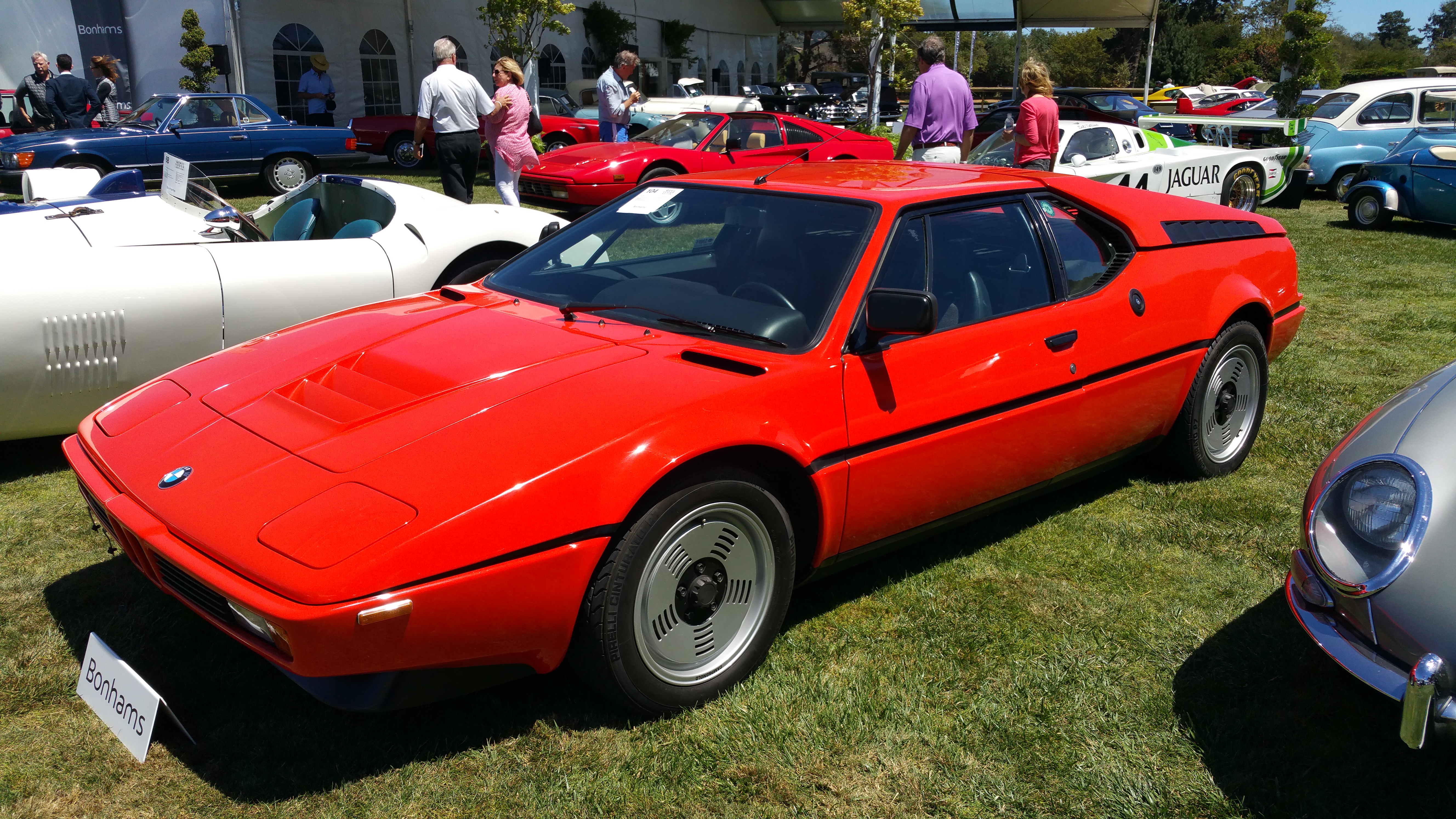-
Insurance
InsuranceAbout our productsLearn about insuringGet a quote Get current values, historical values, model history and more.
-
Valuation
ValuationHagerty valuation toolLook up a vehicle value Get current values, historical values, model history and more.
-
Events
EventsHagerty official eventsHagerty ClubhouseEvent calendar
-
Entertainment
EntertainmentMore to explore
- Shop
- Portal login
1979 BMW M1
AHG Studie Coupe 3.5 L
Vehicle values by condition
Fair
Condition 4
£342,000
#4 cars are daily drivers, with flaws visible to the naked eye. The chrome might have pitting or scratches, the windshield might be chipped.
Good
Condition 3
£382,000
#3 cars could possess some, but not all of the issues of a #4 car, but they will be balanced by other factors such as a fresh paint job or a new, correct interior.
Excellent
Condition 2
£428,000
#2 cars could win a local or regional show. They can be former #1 cars that have been driven or have aged. Seasoned observers will have to look closely for flaws.
Concours
Condition 1
£473,000
#1 vehicles are the best in the world. The visual image is of the best car, unmodified, in the right colours, driving onto the lawn at the finest concours.
Insurance premium for a
1979 BMW M1 AHG Studie Coupe 3453
valued at £382,000
£1796.62
/ year*
History of the 1978 - 1981 BMW M1

1978 - 1981 BMW M1
The M1 was BMW's entry in the mid-engined supercar battles that occupied 1970s car manufacturers. It was intended to compete in Group 4 and Group 5 racing, which mandated at least 400 cars be produced for homologate. The car was designed in-house by Paulo Braque, and Giorgetto Giugiaro’s Italdesign worked on development.
Guigaro designed a conventional mid-engined coupe with fibreglass body over a steel space frame. The tubular chassis was built by Marchesi; Trasformazione Italiana Resina handled the body, and final assembly was completed at the German convertible manufacturer Baur. Lamborghini’s Gianpalo Dallara designed the suspension with unequal length wishbones.
The engine was a longitudinal 24-valve, 3.5-litre inline-6, with Kugelfischer mechanical fuel injection. Power was delivered to the rear wheels through a 5-speed ZF gearbox. In street trim it was good for 277 hp and 243 ft-lb of torque, enough power to get the 3,200-lb car to 62 mph in 5.6 seconds on its way to a 162 mph top speed. Interiors were standard black and grey, with Recaro sport seats, air conditioning, power windows and mirrors, a three-spoke M steering wheel, and a heated rear window. Fit and finish throughout the car were in keeping with typical Teutonic attention to detail.
Production delays effectively ended any chance of having the cars ready to compete in Group 5, but it didn’t matter; the M1 turned out to be nowhere near as fast as the racing Porsches it was intended to compete with. Instead, BMW created a one-make support series for the Formula One calendar called Procar, which would pair race-prepped M1s with retired F1 pilots.
In Procar guise (which shared most specs with Group 4), the M1 delivered 470 bhp, while cars built to Group 5 specs utilized a smaller turbocharged 3.2-litre engine capable of 850 bhp. The cars were surprisingly aerodynamic and race cars needed little in the way of spoilers or wings. Production tallies amounted to 456 M1s, including an estimated 56 race cars.
A footnote to the M1 story is the "art car" created by pop artist Andy Warhol, whose Group 4 racer finished sixth overall at the 1979 24 Hours of Le Mans. Though the M1 proved a short-lived experiment, it remains a viable and reliable alternative to many of its contemporaries that came out of Italy during the same era and prices reflect how the car’s reputation has grown over the years.
All 1979 BMW M1 body types
| Year | Make | Model | Submodel | Body Type | Engine size | Average value |
|---|---|---|---|---|---|---|
| 1978 | BMW | M1 | Base | Coupe | 3.5 L | £ 299,000 337,000 378,000 500,000 |
| 1978 | BMW | M1 | AHG Studie | Coupe | 3.5 L | £ 342,000 382,000 428,000 473,000 |
Hagerty Newsletter
Get your weekly dose of car news from Hagerty UK in your inbox

ADVERTISEMENT